 00:45:00
00:45:00
Publishing Faraday’s Candle
Michael Faraday’s The Chemical History of a Candle is arguably the most popular science book ever published. Based on Faraday’s final series of Christmas Lectures at the Royal Institution, it has never been out of print in English since it was fi....
More details | Watch now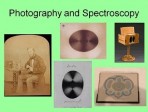 00:45:00
00:45:00
Radiometers as buttonholes: the extraordinary material legacy of William Crookes
William Crookes was a physicist, chemist, entrepreneur and spiritualist. Being a consummate experimenter he designed precision instruments of great delicacy, in particular exquisite glass vacuum tubes. The radiometer, when first exhibited in 1875, ....
More details | Watch now 01:35:00
01:35:00
Dive into the thrilling and extraordinary world of science
Take one step away from the shore with the Royal Society Winton Prize for Science Books. Set yourself apart from the crowd on an expedition into unfamiliar scientific territory with the shortlisted authors and judges of the Royal Society Winton Prize....
More details | Watch now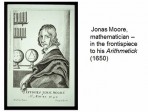 00:42:00
00:42:00
Jonas Moore and his ‘Mapp of the Great Levell’
The mathematician and surveyor Jonas Moore was elected FRS in the 1670s, as a result of his close involvement in plans for the founding of the Royal Observatory. At that stage he was employed as Surveyor General of the Royal Ordnance, but under the....
More details | Watch now 00:41:00
00:41:00
Science for all: popular science in the age of radio
How do you get ordinary people to take an interest in science? This was already becoming a problem for the scientific community in the early twntieth century. But rather than letting outsiders do the job, the scientists took an active role. They ....
More details | Watch now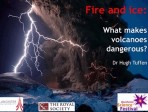 01:03:00
01:03:00
Fire and ice: What makes volcanoes dangerous?
Some volcanoes are gentle, others inconvenient, and others still, deadly. What makes volcanic eruptions explosive? What happens when volcanoes are covered in ice, as in Iceland or Chile - and what happens when the ice melts? Dr Hugh Tuffen has visi....
More details | Watch now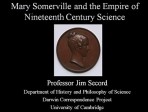 00:45:00
00:45:00
Mary Somerville and the Empire of Science in the Nineteenth Century
Prof. Jim Secord, Dept. of History and Philosophy of Science, Cambridge. Mary Somerville (1780-1872) was a leading mathematician and author of important books on the sciences: it was in connection with a review of one of these that the term "scientis....
More details | Watch now 01:05:00
01:05:00
When will we understand Autism Spectrum Disorders?
It is agonising for a parent, troubling for a clinician, and puzzling for a researcher when a young child seems oblivious to people, is fixated on spinning objects, and shows no sign of communicating. An adult who finds their own inner states opaque,....
More details | Watch now 00:51:00
00:51:00
Music, architecture and acoustics in Renaissance Venice: Recreating lost soundscapes
During the Renaissance in Venice, composers such as the Gabrieli and Moneverdi created some of their greatest masterpieces for performance in the great churches on festive occasions. But what would the music have sounded like, given its complexity an....
More details | Watch now 00:48:00
00:48:00
Niépce in England
In October 2010 the National Media Museum hosted the 'Niépce in England' Conference where they could announce and share with the photographic, conservation and scientific communities the ground breaking findings which had been discovered during the ....
More details | Watch now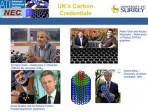 01:01:00
01:01:00
Carbon electronics
From structure and topology, to mechanical and electronic properties, a seemingly simple change in bonding between carbon atoms can conceive a plethora of material types. With diamond and graphite known since antiquity, better understanding of the sy....
More details | Watch now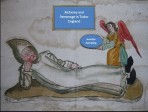 00:39:00
00:39:00
Alchemy and patronage in Tudor England
Dr Jenny Rampling, Dept. of History and Philosophy of Science, Cambridge. In early modern England, alchemical practitioners employed a range of strategies to win the trust and support of powerful, even royal, patrons: from the preservation of healt....
More details | Watch now
